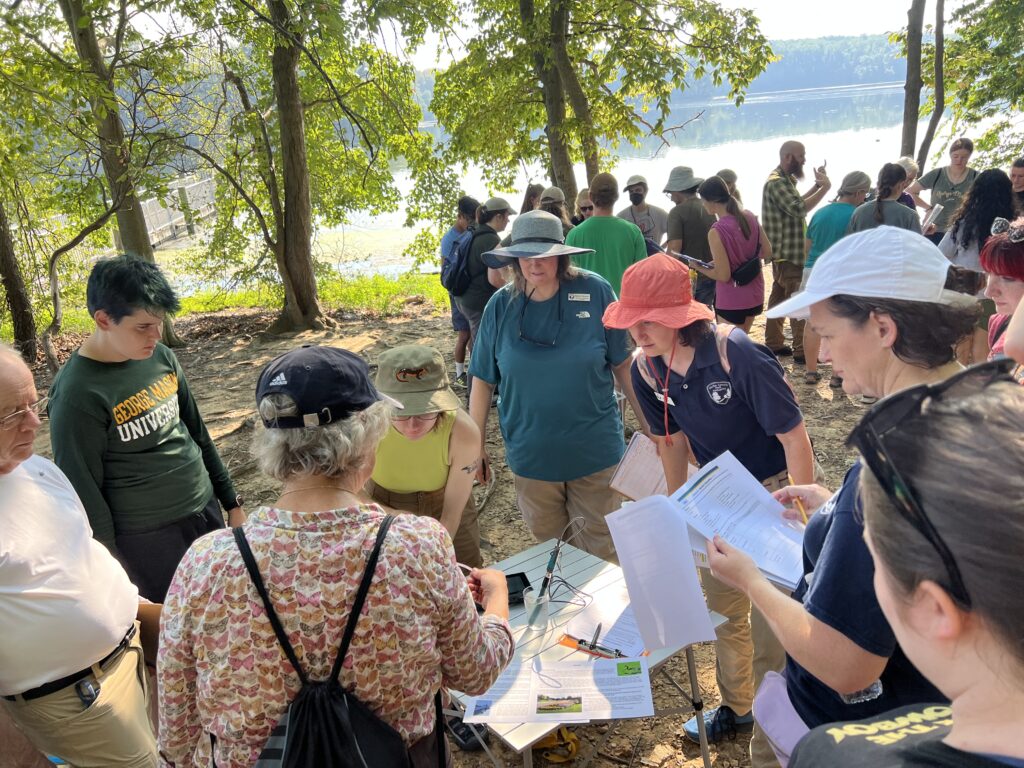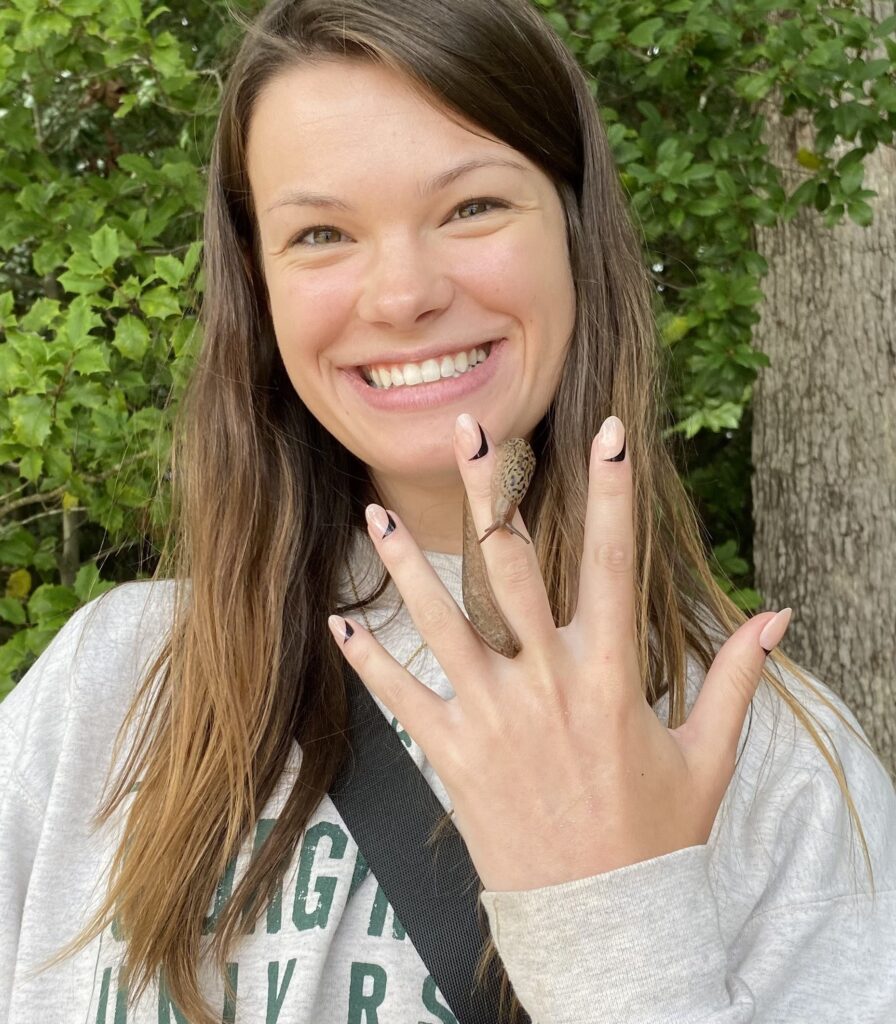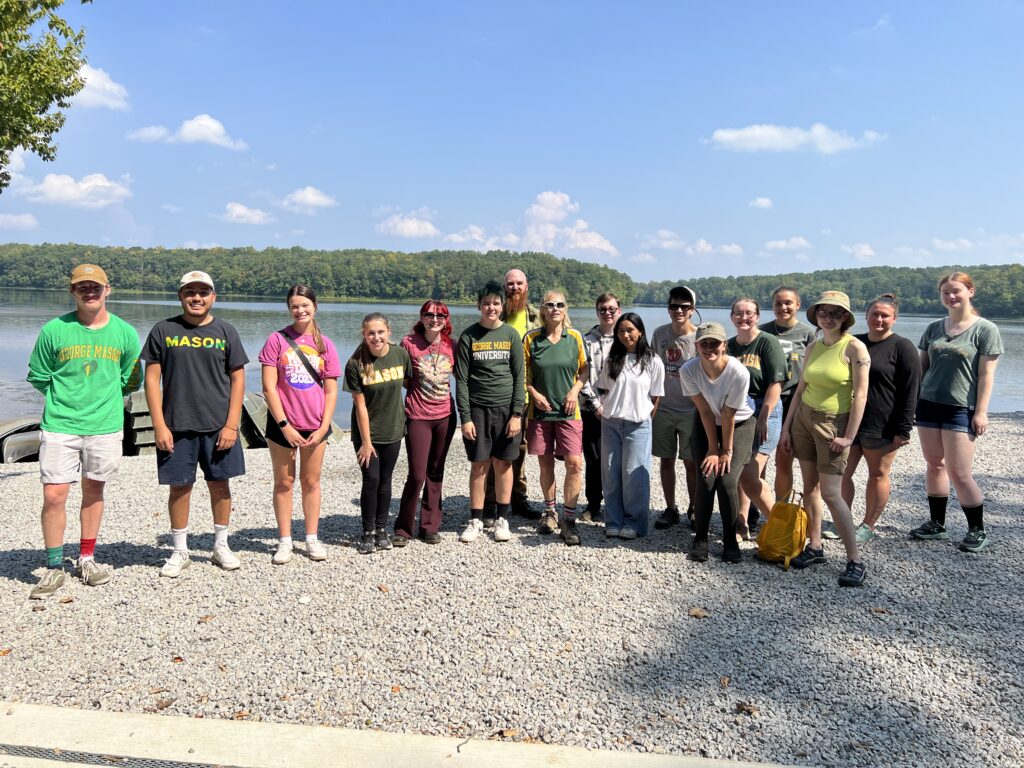As the days grow shorter and colder, another successful season for George Mason’s field interpreters has wrapped up for the year. The Meaningful Watershed Educational Experiences program, or MWEE, has employed over 350 mason students since its creation in 2010. Initially funded by the Bay Watershed Education and Training (B-WET) program, MWEEs play an important role in the National Oceanic & Atmospheric Administration’s mission for a more environmentally literate and compassionate public. Mason students play a huge part – not only as educators, but as friendly, energetic, and effective communicators who inspire youth to get engaged in nature. Since 2009, PEREC field Interpreters have engaged and inspired >150,000 middle school students!
This hands-on, outdoor position hires every spring and fall, and provides an array of crucial, unique experiences that can really bolster an environmental science resume. Positioned at either Lake Burke or Accotink parks, an average day for a MWEE interpreter means a part-time, fast paced shift working rain or shine on any day during the week.

The materials and plans for four stations are provided – and it’s up to the interpreter to bring those lessons to life, at times improvising content and thinking on their feet to match the unique needs of each 7th grader that experiences the program.

In “Land Use,” students learn how our use of the terrain has changed its physical features, and how that impacts the movement of storm water and consequent erosion.
The “Watershed Organisms” station, meanwhile, introduces students to biodiversity. An interpreter leading this station might start the day by flipping logs or looking for interesting leaves and mushrooms to give kids a peek at some of the plants and wildlife at the parks!
Kids get a chance to meet aquatic critters up close and personal at the “Macro-invertebrates” station.
Or, at “Water Quality,” put their chemistry skills to the test and collect data.
For many 7th graders, their time at MWEE might be their first exposure to a fully forested park – many students were shocked to see parasitic plants, giant slugs, little isopods, chatty woodpeckers, and loads of other unique flora and fauna!
MWEE interpreters don’t just work with kids, but with each other – each season, we have a cast of kind and hard-working people who value team spirit and help with cleaning and set-up, and provide feedback, support, and just friendly chatter! Interpreters are trained alongside the Fairfax Park Authority, which leads their own MWEE stations at other parks – providing a county-wide opportunity for local schools to get outdoors.


